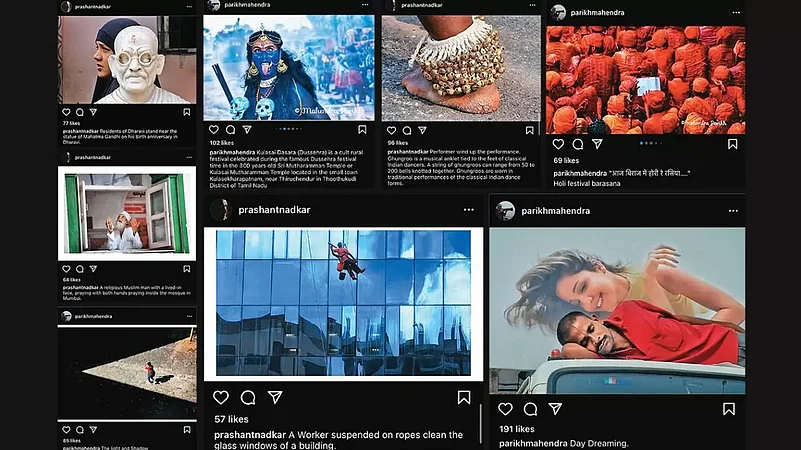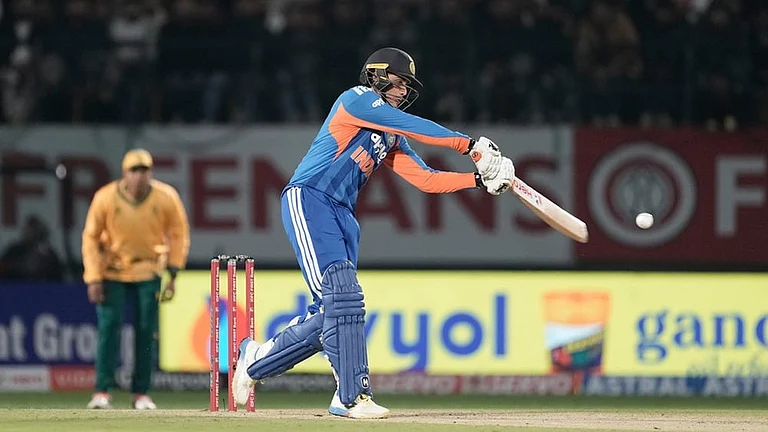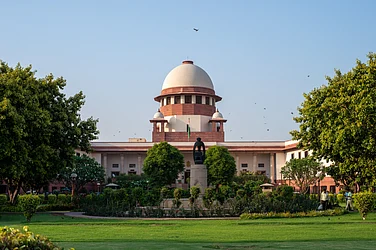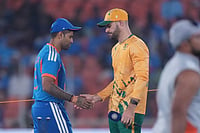Death is strange. Stranger is the way we react to death. Depending on the equation, a simple “RIP” works in some cases, but some deaths rip apart your soul.
Suddenly, memories are jolted out of their slumber. They stretch like a cat and force you to think of the last conversation, or the last meeting. Was it nice? Did it end up in a fight? Did we argue about something? That last trip. That night out. Did we really drink that much? Was there an unfulfilled promise? What about that time when that idiot screwed me over on that deal? You are flooded with memories. Something as simple as an onion could remind you of the person.
Two photographers, both senior colleagues at some point, passed away recently while I was in the UK. The very tiny, insular and rabidly-fenced “art world” will never know about their existence so I guess for them their departure matters even less. But the Indian news industry mules were quite aware of the two.
Prashant Nadkar—My “short-fused” friend
When I was starting out, bunking Xavier’s (Mumbai) to hang out with my mentor, counsellor and now friend, A Srinivas (The Indian Express), was routine. He is lovingly known as Srini or fukya—for the number of cigarettes he smokes. In an earlier life, Srini was an Amrutanjan balm salesman but he always had a penchant for weird stuff.
Once, he took me on a weekend bike trip to Murud as he wanted to photograph a bullock cart race on the beach. But I think that was just an excuse to get out of Mumbai, go to a beach and have a couple of beers! (Prashant) Nadkar, who was with The Week then, and I were both “students” of Srini. After our Murud trip, I did a few assignments for him with cut rolls handed over to me by Srini. I am guessing you know what a cut roll is.
On our way to Murud, we were three men and one kid on two bikes. Srini had Nimba for company and I was dutifully holding Nadkar’s bag while he was riding his bike. We started at Bhaucha Dhakka—a dockside ferry wharf in Mumbai—where I saw Nadkar’s short fuse for the first of many times on that trip. He had an argument with the ticket chap on the ferry. At one point, Nadkar flung the money at him, but he flung it back at Nadkar. I must say, I found their petty ego battle quite funny! Snaking our way through villages that reminded me of Goa, we landed up at Murud. The gorgeous beach was decked up with hundreds of bullock carts. There is something endearing about a village fair and you can see it best in the eyes of the kids seated on their parents’ shoulders, licking away at a melting ice cream.
After the fair was over, Srini found a decent hotel to dump our bags in and we headed to the beach where I saw these grown men turn into babies; only instead of ice creams, they had bottles in their hands! They were consistently aware of the ocean floor drop though, and at one point, Nadkar insisted that I step out towards the shore since I was a little too excited. We took the long road back from Murud via the infamous Wadkhad Naka because Nadkar wanted to buy a ginormous quantity of white onions. It was season time apparently! Around Sion, Nadkar got into yet another argument and slapped a biker. Before the shit could hit the fan, we sped off.

After juggling multiple unpaid internships and poorly paid jobs, I was finally inducted into The Indian Express (IE) photo team; the second Sindhi to be part of it. My employment at IE and then at Hindustan Times (HT) were brutal turning points in my equation with Nadkar. We drifted too far apart but some years later, he realised his dream of joining IE. For decades, working for the IE was every aspiring news photographer’s dream and I think no one was happier than him at having finally realised it.
I once went to photograph gangster Haji Mastan’s son and he asked me if I knew Nadkar. I told him not only do I know Nadkar but I know Srini too who photographed his father! There are very few photographers who have a great nose for stories and an equal, if not better way, to find and maintain relationships with grass root sources.
Photographers like Nadkar would often bring story ideas to the editor who would then assign a reporter or writer to go along and build the piece. The byline was shared between the writer and photographer. I would often see his byline with very important news stories and I was certain that this was his story, not the reporter’s.
A photographer’s eyesight is that singular gift that keeps them going, that keeps them curious, interested, aware, and in love with the world around them. That singular shield protects them from horrible bosses, rubbish salaries, dying cameras, home loans and aching spines.
I learnt of his illness last year. His nails were black with dust, he was reduced to being a withering body on a bed, dependent on others for even a sip of water, a frail shadow of what he used to be. Meningitis had impacted his vision, and Nadkar could no longer see properly. Nadkar’s spirit died much before he did.
Mahendra Navnitlal Parikh—The Fella who loved onions with his drinks!
Maybe because they saw their own beginnings, or maybe it was my ability to write multiple captions, my seniors at IE, especially Srini, were extremely protective and fond of me. (Mahendra) Parikh, (Vasant) Prabhu and (Neeraj) Priyadarshi— the trio of the Western suburbs—would often wait for me to finish so we could go home together. Long bike rides to distant corners of the city after a long hard day can be risky. Highway hypnosis is fatal. Banter with a co-passenger keeps you awake and alive.
Parikh was notorious for his inability to drive in a straight line. His journey home was full of detours and many learnt the hard way out. I enjoyed every little detour, but I don’t think our families did. Parikh did have some flow to this madness. He’d stop by a bar he was a regular at, and at one point, I lost count of the many places he was a regular at. From waiters to owners to even customers, it was baffling to see how many people knew him and waved at him. A few drinks were a must before the next stop, but not without some onion slices; even when onions were Rs 200 a kilo and more expensive than his whisky! Parikh had a bizarre love for onions and no price was high enough for him. The man’s gotta have onions with his drinks, no matter what! The next stop would be a paan shop. Just like his bar hops, he had a few regular paan pit stops. Sometimes, he would meet a friend there; a pre-planned meeting in the small hours. If not a friend, it would be a source, or a contact. He was always cooking something and he had a way to not let you know even if you stood two inches away from him.
Sometimes, he would drive through neighbourhoods that I had never seen or heard of. The best fallout of working with the papers is that you learn to make mind-maps of the city/town you work in. These late-night loafing expeditions were his way of familiarising me with the city.
He too had a short fuse at times but unlike others, he would curl up like up like a cat once he cooled down. Srini would sometimes refer to him as ‘aye Navnitlal’ and that would drive him mad. I remember this one time when I had the mammoth task to caption prints of 13 photographers for a photo competition. Each chap had sent about 30-50 entries and I had to draft captions which they would print and stick on the back of the print. The IE photo department had just one computer with Microsoft Word.
Parikh came with two shirt boxes, full of prints, approximating 200 or so. He was clearly going to tire out the jury into giving him every damn award on the list! After a few hours, he got a little impatient and started losing his cool, accusing me of avoiding writing captions for him.
Prabhu joked with him and said: “What are you getting stressed about? After the contest, the organisers are anyway going to throw all the prints in Azad Maidan.” Parikh lost his shit, flung his boxes of prints across the department and yelled at Prabhu who made it worse with his unstoppable laughter at the idiocy of it all!
Around 11 PM, Parikh returned to the department. His prints were still on the floor, and we were all tip-toeing around it. He picked them up and gently requested me to write his captions. He was right in time for his turn, so I burned some more midnight oil and my reward was a few beers at Anju’s.
Parikh and Prabhu had a very funny equation. I was once tasked to call Parikh and inform him of an assignment that was added to his schedule. He was already at one, so he refused. He was photographing some fancy car for a lifestyle story. Prabhu took over the phone. Parikh in his signature filmy style told him: “Abhi main badi gaadi mein hoon yaar, tu kisi aur ko bhej wahan”. (I am shooting a big car, you send someone else there). Prabhu replied: “Tu woh bada gaadi chchod, chota gaadi pakad aur shoot karke aa.” (You dump the big car, take the small one, and go for that shoot). Parikh mumbled, “Theek hai” (Okay).
My favourite part of hanging out with Mahendra bhai was his stories. Like the time he covered the Latur earthquake by hitchhiking daily on a passenger airline whose pilot would allow him to sit in the cockpit as he went about delivering supplies. Or, the time he managed to smuggle himself into a jeweller’s son’s extravagant wedding in the sky! The Popleys, who used to live in the same neighbourhood as us, had booked an aircraft to perform the wedding rituals in the air.
Parikh did some weird stuff too. For a summer feature, he convinced his “friend” at a circus to bring out the lions and tigers on to a beach. His story about how he tracked down and blocked the rest of the media from accessing Lakhubhai Pathak is a masterclass on protecting your exclusive story.
I can sometimes still hear his voice narrating the story. He would manoeuvre his voice like he was reading out a radio play and generously deploy the word Raja. “Arreh Raja, dekh aisa hua, sun Raja baat aisi thi, dekh Raja dhyan se sun abhi, tu samjha nahin Raja.”
He would often try to squeeze in a few words in his poor English too. I remember him introducing me to Debanjana, a food writer, saying, “he is THE Ritesh”, and it was rather cute. Parikh loved movies and hence most actor feature shoots were his domain. He also wanted to be in films. I mean, in Bombay, who doesn’t? You sneeze, and one of those droplets will land on someone from the film industry.
I accidentally acted in a few TVCs and Parikh would often tell me to get him a role. I sent his photos to the casting directors I knew, but nothing materialised. Last year, for a commercial assignment, we had to cast a middle-aged father. I tried very hard to get him on board, but the client had other faces in mind.
Such a long rejection would deflate the strongest mind, but Parikh was unmoved. He loved being photographed and he’d take a million selfies of himself everywhere we went. When we went to Nepal, to photograph the aftermath of the quake, he’d sometimes ask us to take a picture of him. Oh! The fearless gamcha-wearing cargo pants-clad macho photojournalist, chronicler of the human condition, surrounded by rubble, despair, death, destruction, acidity and unpaid invoices! But I knew Parikh’s heart and he was just dicking around and having fun, even if it was a shitty situation we were all in. Just to make it all bearable.
For the last two years, I was egging Parikh to make something with his expansive archive—paperback books, zines, booklets or even something as simple as a website that allows the citizens of today to get a glimpse of the many versions of his past. Photojournalists badly need a seat at the table of the “photobook” scene. These modern historians, the front-row witnesses, with a record of some very important fragments of our time have always quietly toiled away, bringing you your morning conversation starter, your bias activator, your tear inducer and the next day’s food wrapper.
While Parikh and Nadkar may have passed on, their archives are still alive, breathing in slumber; like the archives of so many news photographers of our country, our world. All their sweat-soaked negatives and hard drives, scattered bodies of work preserved much better than their own bodies, waiting for that one big day when no one will crop their photos haphazardly without their consent, when no one will ask for more options, when payments will happen on the day of the shoot, when researchers and curators will write volumes on their work and when writers will call them not for contacts but to profile them, when we will ensure they are not forgotten.
Ritesh Uttamchandani is a Mumbai-based photographer





















